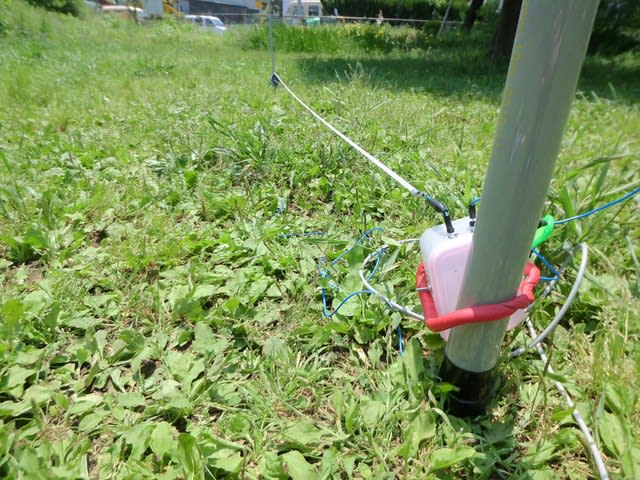The matching box made this time is a simple design tuning circuit consisting a variable capacitor and a troidal core with two sets of coils, 3 truns in primary and 28 turns in secondary. The two coils are not connected each other but the connection can be cotrolled by a switch equipped on the box. 
I brought this to a nearby park to test the box and EFHW antenna performance. The antenna wire used was 7.85m long copper wire. This is very close to 0.95 times a half wavelength of 18MHz, which is 7.91m.
Then, the vertically raised wire was connected with the matching box, this time the switch is in "Close"position meaning the primary and secondary coils are connected. The transimtter connected was FT817ND with a 2m long co-ax 3D2V cable. Output power was 5W with a Li-po battery.
Controlled parameter this time was the height of the counterpoise. A 6 mm wide tape measure was used as counterpoise in this experiment, then height of the counterpoise was changed. Tuning of the matching box was done every time counter poise height was changed with a counterpoise length of 2.8m.

Virtually no SWR change was observed when counterpoise length was changed. It is consistent from the previous experiment that co-ax cable is working partially as counterpoise. Common mode current was measured at each conditions.

The height was changed from 1.7m to 0.1m from the ground. Regardless of the height, common mode current reduces at counterpoise lenth at around 2.8-3m. More energy should be radiated from the antenna at the point.
When height was 1.7m, the "resonating" characterisitics was sharper, but it was getting less sharper with lower counterpoise hight. I am not sure why this to happen. It is obvious that capacitive coupling between counterpoise and ground is getting larger, and it should explain this phenomenon. One thing for sure is that the counterpoise has some meaning even when shielding of the cable is working as counterpoise.
I will try the same experiment with no connection between primary and secondary coils.


















